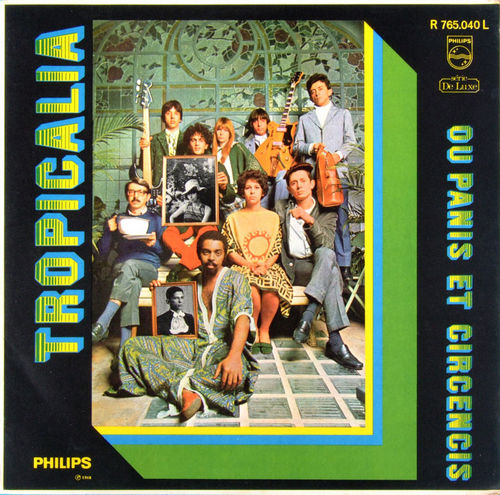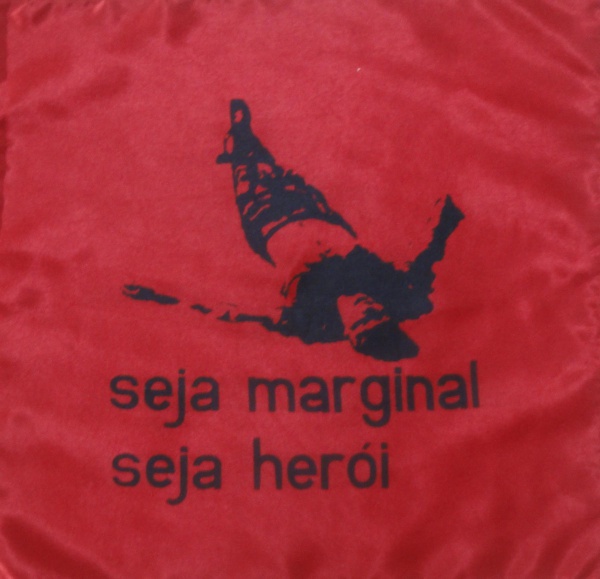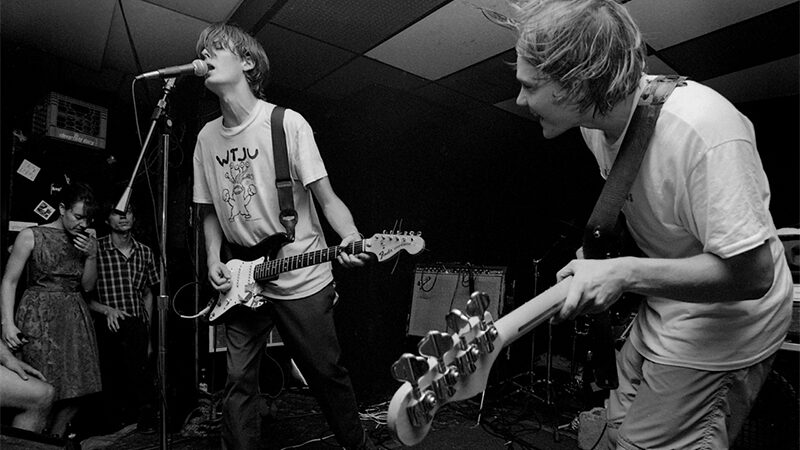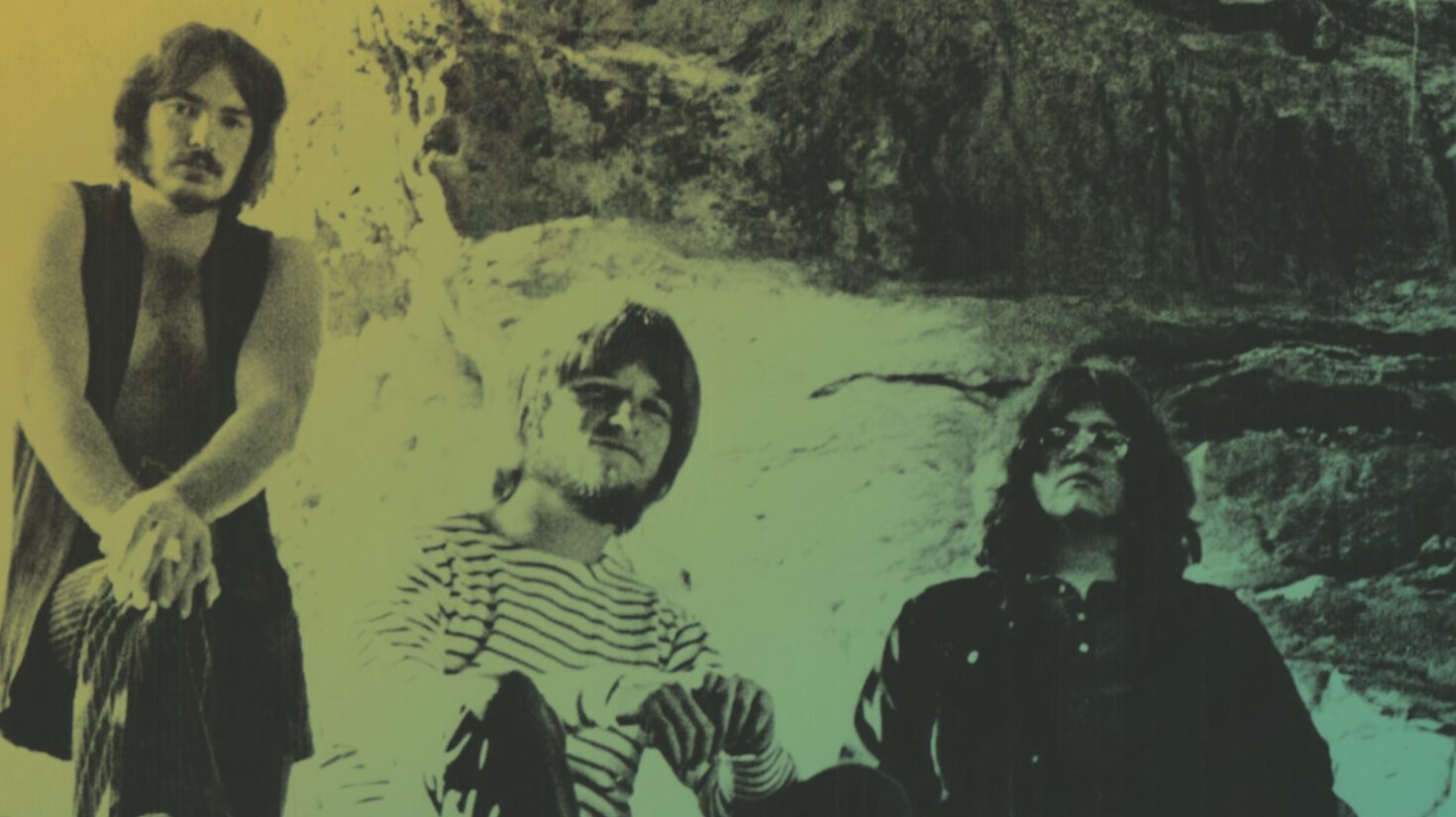
Various Artists
Tropicália ou panis et circencis
Philips – 1968
Rating: 10.0
Fashioned as the Brazilian response to The Beatles’ masterpiece, Sgt. Pepper’s Lonely Hearts Club Band, Tropicália ou panis et circencis was a collaborative effort from the leading figures of the Tropicalismo movement; a thoroughly cohesive group statement of shared artistic intent, it remains a stunning listening experience.
“Don’t say manifesto; DON’T say manifesto.” There lies the entirety of the notes that I fashioned in preparation for writing this review. Virtually every commentary on Tropicália ou panis et circencis that has been created over the past fifty-three years has used the term. Hell, I’m even pretty sure I’ve heard Gilberto Gil himself say it. It’s just that: a) we like to avoid clichés here at Strange Currencies; and b) that word just seems like something that should be used to describe the ramblings of a self-described revolutionary – scrawling an incoherent missive in a remote cabin somewhere in flyover country – and not reduce a work that so eloquently defined a brilliant musical community.
The thing is, Tropicália ou panis et circencis was, in fact, the work of revolutionaries. The Tropicalists that made it – namely Gil, Caetano Veloso, Os Mutantes, Gal Costa, producer Manoel Barenbein, and arranger Rogerio Duprat – approached their craft with the spirit of agitators, hellbent on shaking Brazil out of the cultural complacency that persisted under the nation’s harsh military dictatorship. Even the album’s title – borrowed from a song by Os Mutantes – is a cheeky allusion to the “bread and circuses” that the Roman empire had once used in order to maintain a docile populace. The Tropicalists knew what they were doing, and it was through their strength in numbers that Tropicália ou panis et circencis would become such a bold artistic statement.
Imagine, if you will, Talking Heads, Patti Smith, Ramones, Television, and Blondie all getting together in the fall of 1977 to produce a collaborative album, and you gain a greater sense of just how extraordinary a work Tropicália ou panis et circencis is. While Tropicalismo as a movement itself was only a few months old – and would be declared “dead” by its main practitioners shortly after this album’s release – there was a sense that Panis et circencis represented a true “happening,” one that could be observed again and again with every spin of the LP. Though much of it retains the party-like atmosphere that one would expect from such a meeting of minds, the album is underscored by a sense of significance that permeates throughout its twelve tracks.
That significance is further magnified by the fact that Panis et circencis consists of virtually all brand new material; just Os Mutantes’ quasi title-track had been previously released – itself just one month prior – and only Gal Costa’s “Baby” and Nara Leão’s “Lindonéia” would be repurposed on subsequent solo LPs. Therefore, rather than serving as something of a “greatest hits” collection for a scene, the vast majority of Panis et circencis was created with a sense of collective purpose – one that aimed to redefine the parameters of Brazilian pop music, while containing subtle-yet-pointed jabs at the nation’s contemporary political climate.
The collective nature of Panis et circencis ensured that Tropicália’s most envelope-pushing act, Os Mutantes, would find themselves somewhat muted. Aside from the aforementioned title-track, the group is essentially relegated to the role of “backing band” throughout – the same role that the São Paulo trio had played on Gilberto Gil’s eponymous LP, released just two months earlier. Likewise, Costa and Leão each get just one featured track apiece – though both make it count, with each of their contributions standing as their finest individual moment on record. Another scene pillar, Tom Zé, plays an even more reduced role – earning only a songwriting credit for the side-A centerpiece, “Parque industrial,” and an appearance on the album’s cover.
As a “co-founder” of Tropicalismo‘s musical wing, Caetano Veloso is granted a significant presence throughout Panis et circencis, with two solo tracks, a co-lead, a memorable cameo on Costa’s “Baby” – a song that he had written with her in mind – and marquee billing on the album’s pair of “all hands on deck” efforts. As a writer of half of the record’s material, Veloso is, at turns, wistful, fiery, contemplative, sincere, and sarcastic. Though his adjoining solo albums would show an even more expansive range of his talents as a performer and writer, Veloso’s contributions to Panis et circencis were enough on their own to make him a legendary figure in Brazilian popular music.
While Veloso was the sensitive wordsmith with a golden voice, over the years, I’ve come to view Gilberto Gil as the true heart of Tropicalismo. It is he who serves as the ringmaster throughout Panis et circencis, from the opening strains of his “Miserere nóbis” to the closing group showcase of “Hino do Senhor do Bom Fim.” As a writer, singer, and guitarist, Gil is a commanding presence throughout, but one who also knows when to cede the spotlight to his talented compatriots. More than any other single figure involved in the record, one gets the sense that Panis et circencis is a realization of Gil’s artistic vision – a belief reinforced by his front-and-center placement on the album’s Sgt. Pepper-inspired cover.
Whatever the commercial or artistic impact was, Panis et circencis would certainly catch the attention of the Brazilian government. A month prior to the album’s release, Edson Luís – a student at the Instituto Cooperativo de Ensino – was killed during a protest over the high prices at the university’s Calabouço Restaurant. Larger demonstrations followed, including the “March of One Hundred Thousand” – in which both Gil and Veloso participated – that coincided with Luís’ burial. Panis et circencis would arrive in an atmosphere of dramatically increased tension, and within months of its release, its two central creative voices would be arrested, jailed, and ultimately deported.

Hélio Oiticica, 1967
Exile from Brazil would do little to silence the musical output of Gil and Veloso. Each would record an album during their four-month house arrest in Salvador, and during their lengthier deportation to Britain that followed. While those records stand among their finest work, they lack the vitality that flowed throughout each and every moment of Panis et circencis. In fact, it was not until they returned home to Brazil in 1972 that the pair again approached the unbridled exuberance of their 1968 recordings – Gil with Expresso 2222 and Veloso with Transa.
Despite the brilliance that would come before and after, no single moment in Gil and Veloso’s catalog could ever quite match Panis et circencis. It’s a fact of artistic creation that great works are so often forged in moments of pressing urgency. For Gilberto Gil, Caetano Veloso, Gal Costa, Rogerio Duprat, Tom Zé, and Os Mutantes, the summer of 1968 provided both that fierce sense of urgency, and a fleeting moment of artistic freedom in which to capture it.




